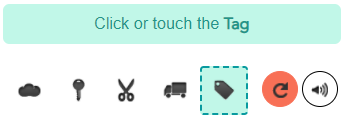Uninsured & Underinsured Motorist Coverage
Is underinsured motorist insurance coverage worth it? Learn more about this important coverage

What is uninsured and underinsured motorist coverage?
Uninsured and underinsured motorist coverage protects you from damages in an accident caused by an at-fault driver with no liability insurance, or less liability insurance than necessary to cover the damages. Uninsured motorist insurance also covers hit-and-run accidents. Let's explore the different components of uninsured and underinsured motorist coverage, and the reasons you should consider it.

Uninsured and underinsured motorist insurance coverage definition & basics
Although liability insurance is required by law in most states, many drivers do not carry car insurance. Moreover, many drivers carry only the minimum liability coverage, meaning their coverage isn't sufficient to pay for damages they might cause in an accident. For this reason, car insurance companies created uninsured and underinsured motorist coverage. Uninsured motorist coverage covers you if you're in a not-at-fault accident with a driver who does not have insurance — this includes hit-and-run scenarios. Underinsured motorist coverage kicks in when the at-fault driver does have insurance, but the damages exceed the liability limit of their policy.
These coverage options can be broken down into two parts: uninsured/underinsured motorist property damage and underinsured/uninsured motorist bodily injury.

What is uninsured property damage insurance coverage?
Sometimes shortened to UIM PD, uninsured property damage coverage is similar to collision coverage: it protects your vehicle from physical damage in a car accident. While it usually comes with a deductible, your insurer might reimburse you for it and send an invoice to the at-fault party. A key difference between uninsured property damage coverage and collision coverage relates to the way using them may impact your premium. While it can vary by insurance company, collision claims are typically seen as at-fault accidents to an insurance company. Meaning, they can cause your premium to rise. But by definition, uninsured/underinsured motorist property damage coverage is the result of a not-at-fault accident. Again, this isn't consistent across all car insurance companies so you should expect some discrepancies.
What is uninsured bodily injury insurance coverage?
This coverage kicks in if you sustain bodily injury or harm when hit by an underinsured or uninsured driver. This can include medical bills and other associated fees. Unlike property damage coverage, this insurance does not have a deductible.
Stacked vs. Unstacked Coverage?
Stacked insurance increased your uninsured motorist coverage based on the number of cars you insure. For example, you have 3 vehicles that are insured with $10,000 worth of uninsured bodily injury coverage (UMBI). If you're struck by an uninsured driver with stacked coverage, you could apply all 3 vehicle's worth of $10,000 in UMBI coverage to give you $30,000 of total coverage.
You should expect an additional increase in your premium if you decide to stack your coverage. Also, this coverage is not available in every state.
Do you need uninsured motorist insurance coverage?
Some states require you to carry uninsured motorist coverage. If uninsured and underinsured motorist coverage isn't required in your state, you might consider this policy anyway, for the following reasons:
-
Your state has a large number of uninsured drivers (see below).
-
Your state's minimum liability coverage is unusually low and you have a valuable vehicle. If we think back to our definition of underinsured, this coverage can protect you from being empty-handed with your coverage.
-
You want protection against a hit-and-run driver, or being hit by a car as a pedestrian (both of these are also covered by uninsured/underinsured motorist coverage).

Frequently asked questions:
Do I need uninsured motorist coverage?
About one in seven drivers is currently uninsured. There's a one-in-seven chance you could be responsible for paying for the damages to your vehicle after a collision caused by an uninsured driver, either through a collision claim or out-of-pocket. If this gives you cause for concern, consider adding uninsured coverage to your policy.
Is uninsured motorist coverage worth it?
This question is difficult to answer. You should ask yourself whether you are comfortable with risk and how confident you are in your ability to pay damages out-of-pocket if a car accident were to occur. If you drive a luxury car, you might not be as willing to risk out-of-pocket payments as someone with an older owned vehicle. Consider your financial situation before bypassing uninsured motorist coverage.
How much uninsured motorist coverage do I need?
As we stated, uninsured motorist bodily injury-related coverage will insure you against medical expenses and related costs in the case of injury, while property damage coverage will protect your motor vehicle. Depending on your preference and your state, you can elect to carry one or carry both. In terms of dollar value limitations, it is recommended to have your liability limits and your uninsured motorist limits match. Most experts recommend keeping liability limits on your insurance policy at 100/300.
How much does uninsured motorist insurance coverage cost?
The cost of uninsured motorist coverage varies widely, depending on a number of factors, including age, vehicle, and location. Use The Good insured car insurance search engine to shop quotes from hundreds of carriers in seconds.
| Rank | State | % of Uninsured Drivers |
|---|---|---|
| 1 | Oklahoma | 26% |
| 2 | Florida | 24% |
| 3 | Mississippi | 23% |
| 4 | New Mexico | 22% |
| 5 | Michigan | 21% |
| 6 | Tennessee | 20% |
| 7 | Alabama | 20% |
| 8 | Rhode Island | 17% |
| 9 | Colorado | 16% |
| 10 | Washington | 16% |
| 11 | Arkansas | 16% |
| 12 | Kentucky | 16% |
| 13 | California | 15% |
| 14 | Indiana | 14% |
| 15 | Montana | 14% |
| 16 | Louisiana | 14% |
| 17 | Missouri | 14% |
| 18 | Ohio | 14% |
| 19 | Illinois | 13% |
| 20 | Texas | 13% |
| 21 | Alaska | 13% |
| 22 | Maryland | 12% |
| 23 | Maryland | 12% |
| 24 | Georgia | 12% |
| 25 | Wisconsin | 12% |
| 26 | Delaware | 12% |
| 27 | Minnesota | 11% |
| 28 | Arizona | 11% |
| 29 | New Jersey | 10% |
| 30 | Virginia | 10% |
| 31 | Iowa | 10% |
| 32 | Kansas | 9% |



























